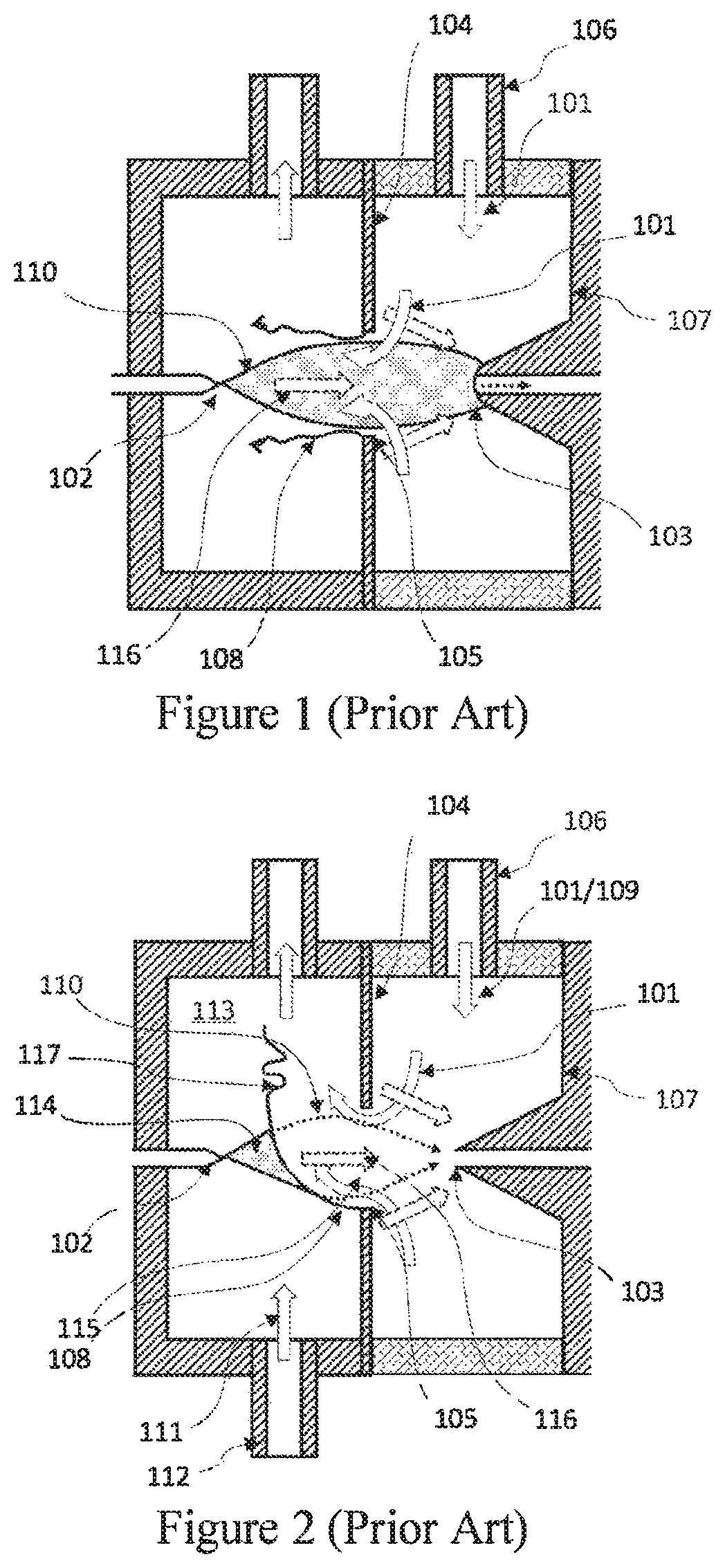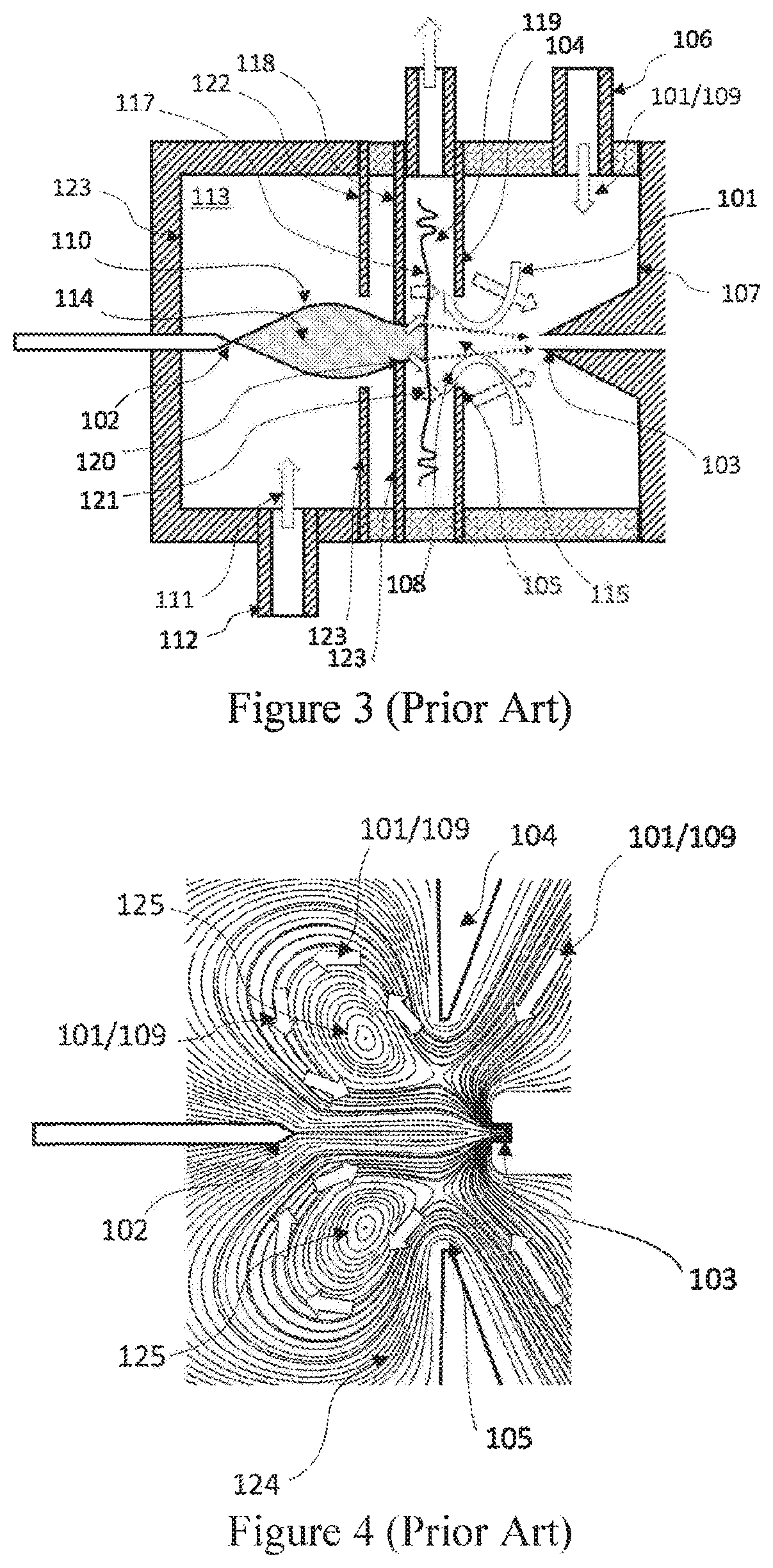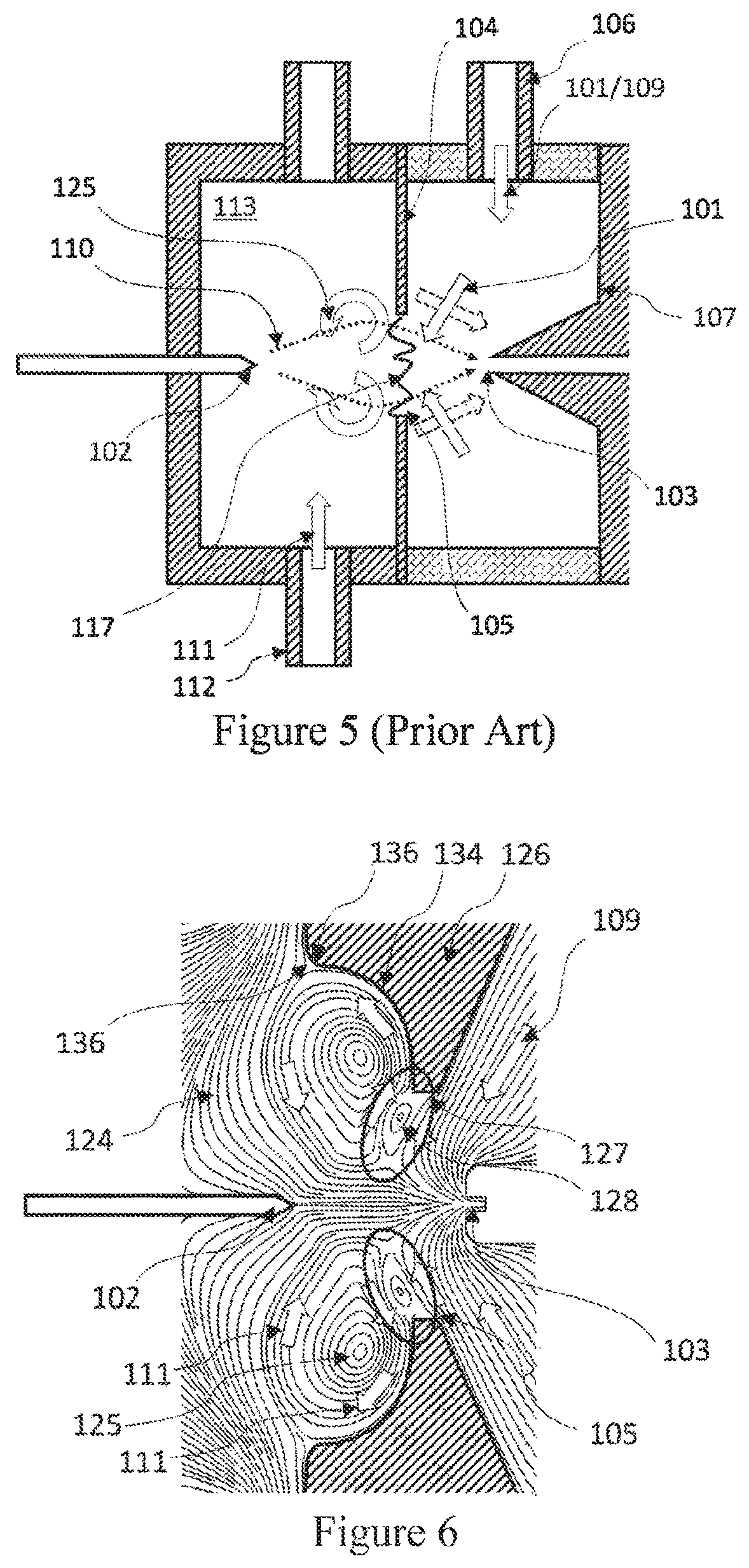However, larger molecules are not used because handling and accurately detecting them in breath is technically very challenging.
For an analyzer of molecules to provide biologically
relevant information, it is of paramount importance to be able to detect larger molecules, but larger molecules with lower volatilities cannot be detected with sufficient accuracy with state of the art technologies.
At the cost of introducing a new and time-consuming step, pre-concentration techniques such as
Solid-Phase Micro-Extraction (SPME) increase the sensitivity of the GC-
MS analysis.
However, these methods require long analysis times, which are not compatible with real-time analysis, and their sensitivity is limited by the fact that the GC column can only accept a very small amount of sample.
For a human, it is well known that drastic changes can occur in a matter of minutes.
When a complex sample is analyzed, this produces fragments at virtually all masses, which produce a high background
signal level that deteriorates the limits of detection.
While this approach provided a very good sensitivity, the vapors were also introduced in the vacuum side of the
mass spectrometer, which was rapidly contaminated.
However, its ionization efficiency, which is defined as the ratio of sample ions transferred to the analyzer over sample molecules introduced
ion the ionizer, was limited by two main factors: on the one hand, the shear layer (117), which separates the counterflowing clean gas (109) and the sample gas (111), is unstable.
Further theoretical and experimental studies showed that, when the sample included reactive vapors that compete for the available electrical charge, charge competition effects reduce the p ratio, thus reducing the ionization efficiency [9].
While the ionization efficiency improvement can be viewed as an
advantage, this is very problematic because the fact that ionization efficiency can change during an analysis due to
humidity variations hinders quantitative analysis.
In particular, biological samples such as breath, or
cell culture headspace, very often carry water vapors, which can change the ionization efficiency of the sample molecules unpredictably.
However, this configuration creates a new problem: the
system is more susceptible to
contamination, which condensates on the inner walls (123) of the ionizer.
This produces high background signals, which deteriorate the LoD.
This is produced by the following reasons: (i) the complexity of the internal geometry of the
system is dramatically increased as a result of adding the electrodes.
As a result, accessing the internal parts of the ionizer is difficult, and cleaning and maintenance procedures become very
time consuming.
(iii) In addition, the intricate geometry leads to stagnated regions in which
contamination tends to build up.
However, the temperature of operation of the SESI described in U.S. Publication No. 2010 / 0264304 A1, and the SESI described in U.S. Pat. No. 8,217,342 B2 and U.S. Pat. No. 8,461,523 B2, is limited by the
boiling point of the
electrospray liquid because the
electrospray cannot be formed if the liquid boils.
Since the different ingredients of the
electrospray liquid have different
evaporation ratios, the composition of the liquid at the very tip of the cone varies in an uncontrolled fashion.
This is particularly problematic because small
convection changes, temperature variations, or even
humidity variations, affect the composition of the liquid arriving at the tip of the
meniscus when the temperature of the ionizer approaches the
boiling point of the liquid.
On top of this, since the
boiling point of the electrospray liquid is below the boiling and / or sublimation point of most of the low volatility species of interest, the temperatures that can be achieved with these configurations are not sufficient to ensure that the analytes of interest do not condensate onto the inner walls (123) of the ionizer.
As a result, low volatility species tend to condensate and be desorbed onto the inner walls of the ionizer, thus increasing the background levels.
While these solvents enable an increase in the temperature of operation of the ionizer, they are usually not compatible with the
mass spectrometer.
This configuration solves the compatibility problem between the high-temperature SESI and the MS, but it is limited only to the case in which a DMA is interposed between the SESI and the MS.
In conclusion, previous SESI configurations show promising results, but they are subjected to the following problems:(i) previous attempts to improve the ionization efficiency are prone to
contamination over time.
This results in high
signal background levels, which deteriorate the Limits of Detection of the instrument;(ii) the temperature of operation in the ionization region is limited by the boiling point of the electrospray liquid, which is limited by the type of analyzer connected downstream of the SESI.
When the SESI is coupled directly with a mass spectrometer, this limits the maximum
operating temperature of the system.
As a result, low volatility species tend to condensate in the inner walls of the ionizer, thereby increasing background signals and deteriorating LoD;(iii) since the temperature in the
ionization chamber is very close to the boiling point of the electrospray liquid,
evaporation of the electrospray liquid in the tip of the spray is quite substantial.
This affects the stability and the
repeatability of the electrospray.
As a result, the signals become unstable, lowering the quality of the measurements.(iv)
humidity content and charge competition effects affect the ionization efficiency, which depends on the particular configuration of the measurement, and which is not always constant and predictable.
As a result, establishing a direct correlation between the
signal intensity produced by an
analyte, and its concentration in the sample gas is not always possible.
This hinders quantitative analysis.
The ionization efficiency of the ionizers designed with this numerical
simulation method falls dramatically when the sample flow is below 0.5 lpm, but the simulations failed to predict this.
This mismatch between simulated results and empirical results indicated that a new numerical method was required to better understand the fluid
mechanics within the SESI.
 Login to View More
Login to View More 


